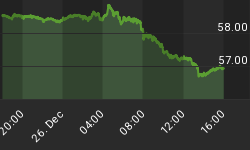Today's Eurozone PMI report on manufacturing rose to 5 ½ year high at 56.1 in March, while the US ISM manufacturing report fell to a 7-month low of 55.2. This is the first time the Eurozone manufacturing index surpasses its US counterpart in more than 3 years.
This further supports our forecast for an ECB rate hike this Thursday to 2.75%

So what about the euro's frequent failure to follow through on its gains versus the dollar?
This can only be interpreted via the markets' own volatile view of the Federal Reserve decision on interest rates. The timing of the euro's pullbacks against the dollar coinciding with upbeat pronouncements by the Fed or positive US data has become more in synch to the extent that the slope of the US yield curve has shown a closely negative relation with the EURUSD rate. Although fed funds futures price near a 100% chance of a 25-bp hike in May and about 40% chance of a similar tightening in June, we have seen that such pricing is susceptible to the intra-meeting US data, which remain substantially plentiful before the FOMC meets in 4 weeks' time. Today, the yield curve has normalized as the yield on the 10-year note at 4.87% rose above its 2-year counterpart of 4.85%.
We have seen how the EURUSD and the US yield curve made a U-turn 2 Fridays ago when a dismal US existing home sales figure followed an upbeat new home sales report. While the February data have been mainly on to the upside, markets are aware that it may take as a few weak reports for the market to interpret the Fed as being at the end of the tightening cycle rather than near the end of it. We continue to view the slowing housing market as a key point of juncture for the US economy especially that over $700 trillion was extracted from home values by consumers. With new-home sales recording a 10.5% drop in February, the biggest decline in 9 years and the 4th monthly decline in the last 6 months, and mortgage applications at 3-year lows, the Fed is certainly near the end of the tightening as long bond yields surpass 4.85%. Today's report on pending US home sales showed a 0.8% decline in February and a 5.2% drop compared to February 2005.
Meanwhile, on the Eurozone side, Germany's Ifo index of business sentiment jumped o 15-year highs at the same day that even Italy's business confidence hit 5 year highs. The bigger than expected M3 growth at 8% should also justify the case for an ECB rate hike this week, as the monetary argument is added to the price stability mandate. Although the majority of economists are expecting no rate hike this week, we are leaning towards a surprise by the ECB despite the JC Trichet's speech last week, which was not particularly hawkish. Pundits may also point to the student riots in France and light strikes as potential hindrance to a rate hike by the French president of the ECB.
But even if the ECB does leave rates on hold this week, it will surely leave the door open for a May tightening. We could see further euro declines later this week in the event that the ECB makes leaves rates unchanged in a relatively dovish press conference, followed by a strong US payrolls figure on Friday. But ongoing market uncertainty vis-a-vis the Fed's May meeting -- which we still deem to be up for grabs -- should counter any dollar gains with euro support at 1.1950 and 1.1870 levels.
It's also worth noting that the euro is at 2-month highs vs the yen, 7/12 month highs vs. the pound sterling and 25-month highs against the swiss franc. The momentum indicators on the EURUSD daily chart appear more positive than on the 4-hour chart, suggesting 1.20 could be tested this week but the 100 day MA seen providing support at 1.1960 and the 5-week trend line support stands at 1.1950. A longer term trend line support extending from the 1.1660 low (Dec 2) through the 1.1824 low (Feb 27) seen holding at 1.1885-90 -- which is likely to test the pair's resilience as long as the Fed is not fed with a new dosage of hawkishness.
But the relative ease, in which the euro continues to breach as well as close above its 200 day MA, reflects a considerable technical improvement in the pair. While support is held at the aforementioned levels, we expect the currency to continue testing the ternd line resistance at the 1.22 level, but considerable pressure at 1.23.
Euro bullishness barely budged last week when net longs slipped 1.6% to 40,811 contracts down fro their November high attained 2 weeks ago. We don't think the speculators will take to opening fresh net euro shorts simply due to uncertainty with the Fed's tightening policy, especially when these prospects have to be assessed from one week to the next. Meanwhile the ECB's tightening is becoming a question of "when" rather than if. This is not to say that ECB tightening will eliminate the US yield advantage altogether this year, but increasing tightening from Japan, the Eurozone and Canada will reduce the US yield advantage, which could accelerate any unwinding of carry trades, especially if the seemingly "isolated" story of Iceland krona proves to be an unwinding catalyst as did the "deceptively isolated" story of the Czech koruna in May 1997.

















